
 |
|
|
August 29, 2011

A Special Announcement! Savant usually doesn't try to compete in the breaking news game, but I have a hot announcement from Nick Redman of the Twilight Time disc label. Twilight Time has signed a deal with Columbia / Sony for an exclusive Blu-ray line of Columbia Classics. Twilight Time's 20th-Fox titles will go forward, with DVDs of My Cousin Rachel on September 13, Stagecoach ('66) on October 11, The Left Hand of God on November 8 and Rapture ('65) on December 13. But, coming on November 8 will be a Blu-ray of Columbia's Harryhausen classic Mysterious Island. Following on December 13 is a Blu-ray of the original Fright Night. One can only hope that Island will include an isolated Bernard Herrmann music track: Twilight Time's announcement hints that such might be the case. Thanks for reading, Glenn Erickson Tuesday August 30, 2011
Savant's new reviews today are: Blu-ray 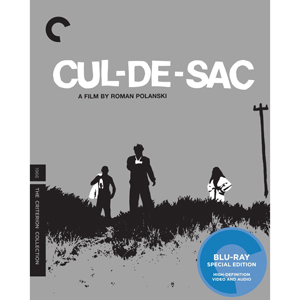 Roman Polanski's quirky English comedy practically redefines cinematic quirkdom. Donald Pleasance and Francoise Dorleac have escaped to a castle on an island, only to be 'invaded' by Yankee gangster Lionel Stander. This moody, overcast Blu-ray finally restores the film to its full visual impact. From the Criterion Collection.
Roman Polanski's quirky English comedy practically redefines cinematic quirkdom. Donald Pleasance and Francoise Dorleac have escaped to a castle on an island, only to be 'invaded' by Yankee gangster Lionel Stander. This moody, overcast Blu-ray finally restores the film to its full visual impact. From the Criterion Collection.
8/30/11
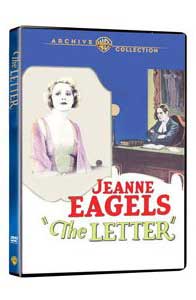 It was thought that famed '20s actress Jeanne Eagels was lost to time, but the WAC has revived an early talking picture made almost immediately before her mysterious death. She's fantastic as Leslie Crosbie, a colonial planter's wife who slays her lover and then tries to bluff her way through a trial. This is a different kind of restoration, which effectively re-animates a legend who died too soon. For Ms. Eagels was a main inspiration for Bette Davis, who would play the same role 11 years later. From the Warner Archive Collection.
It was thought that famed '20s actress Jeanne Eagels was lost to time, but the WAC has revived an early talking picture made almost immediately before her mysterious death. She's fantastic as Leslie Crosbie, a colonial planter's wife who slays her lover and then tries to bluff her way through a trial. This is a different kind of restoration, which effectively re-animates a legend who died too soon. For Ms. Eagels was a main inspiration for Bette Davis, who would play the same role 11 years later. From the Warner Archive Collection.
8/30/11
Blu-ray 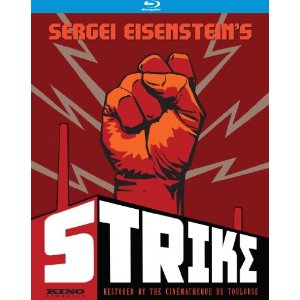 A new French restoration from original materials rescues Sergei Eisenstein's first feature from the wretched 16mm prints we suffered through in film school. In Blu-ray, the HD transfer brings out previously unseen qualities in Eduard Tisse's exacting compositions. A fascinating landmark of classic Soviet filmmaking, from Kino International.
A new French restoration from original materials rescues Sergei Eisenstein's first feature from the wretched 16mm prints we suffered through in film school. In Blu-ray, the HD transfer brings out previously unseen qualities in Eduard Tisse's exacting compositions. A fascinating landmark of classic Soviet filmmaking, from Kino International.
8/30/11
and Blu-ray  The final season of Rod Serling's fantasy anthology contains the expected trick endings, heavy-handed morals and ironic payback scenarios, along with fine acting and direction and a score of undisputed classic episodes. Beautifully transferred in HD, with remixed soundtracks, isolated music tracks, commentaries, interviews, marketing extras and special interviews. In Blu-ray from Image Entertainment.
The final season of Rod Serling's fantasy anthology contains the expected trick endings, heavy-handed morals and ironic payback scenarios, along with fine acting and direction and a score of undisputed classic episodes. Beautifully transferred in HD, with remixed soundtracks, isolated music tracks, commentaries, interviews, marketing extras and special interviews. In Blu-ray from Image Entertainment.
8/30/11
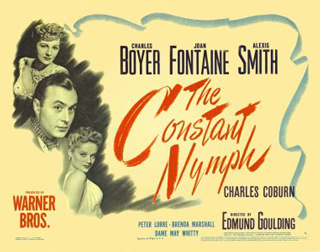
Greetings! Solid-quality discs continue to roll out every week; my collector friends are excited about Citizen Kane the '62 Mutiny on the Bounty and others. I'm working fairly closely with the Turner Classic Movies Online website these days, and have noticed that September contains a bounty of notable channel premieres along with other rarities. I decided to throw together a short list: TCM HD in September is showing the entire Merchant Ivory catalog, which includes titles like Shakespeare Wallah and A Room with a View but also The Deceivers, an exciting and scary tale of the Thugee cult, starring Pierce Brosnan. Add to that ...
Mermaid movies: Mr. Peabody and the Mermaid, Miranda and Mad About Men; The top pick is a rarity of rarities, the 'forbidden' William Faulkner adaptation and pre-Code sizzler The Story of Temple Drake, which packed a huge auditorium at the TCMfest two years ago. TCM always has surprises and thrills for film fans, but September has the hottest schedule I've yet seen. Thanks for Reading -- Glenn Erickson
August 26, 2011
Savant's new reviews today are: Blu-ray 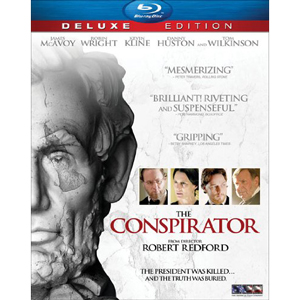 Robert Redford and the American Film Company stick to the complex facts of the case of Mary Surratt, the boarding house owner arrested with the assassins of President Lincoln. Yet the movie comes off as an unsubtle protest against the security hysteria and legal abuses of the post- 9/11 years. Excellent period reconstructions and good performances by James McAvoy and Robin Wright. In Blu-ray from Lionsgate.
Robert Redford and the American Film Company stick to the complex facts of the case of Mary Surratt, the boarding house owner arrested with the assassins of President Lincoln. Yet the movie comes off as an unsubtle protest against the security hysteria and legal abuses of the post- 9/11 years. Excellent period reconstructions and good performances by James McAvoy and Robin Wright. In Blu-ray from Lionsgate.
8/27/11
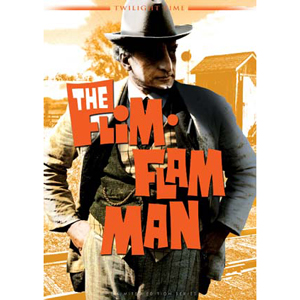 Irvin Kershner's able direction steers what might have been a forgettable slapstick farce into interesting dramatic territory. Michael Sarrazin debuts as a reluctant apprentice conman under George C. Scott's memorable Mordecai Jones, a specialist in parting greedy suckers from their cash in the rural South. Wacky car chases contrast with some winning relationship drama. With Sue Lyon and Harry Morgan. From Twilight Time.
Irvin Kershner's able direction steers what might have been a forgettable slapstick farce into interesting dramatic territory. Michael Sarrazin debuts as a reluctant apprentice conman under George C. Scott's memorable Mordecai Jones, a specialist in parting greedy suckers from their cash in the rural South. Wacky car chases contrast with some winning relationship drama. With Sue Lyon and Harry Morgan. From Twilight Time.
8/27/11
Blu-ray 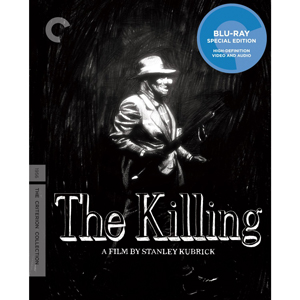 Stanley Kubrick's precociously hip, visually experimental crime classic is one of the best of the hardboiled late-period noirs, a nervous stack of twisted characters and convoluted plotting topped with blackly cynical dialogue by pulp icon Jim Thompson. Superior in every respect. With Sterling Hayden, Elisha Cook Jr. and Marie Windsor. In Blu-ray from the Criterion Collection.
Stanley Kubrick's precociously hip, visually experimental crime classic is one of the best of the hardboiled late-period noirs, a nervous stack of twisted characters and convoluted plotting topped with blackly cynical dialogue by pulp icon Jim Thompson. Superior in every respect. With Sterling Hayden, Elisha Cook Jr. and Marie Windsor. In Blu-ray from the Criterion Collection.
8/27/11
and Blu-ray  Now available separately, Sergio Leone's first two Clint Eastwood westerns (and their Ennio Morricone scores) come across well in HD. The discs have retained earlier DVD special edition extras featuring the key participation of spaghetti western expert Sir Christopher Frayling. The heralded "Man With No Name" actually answers to the names "Joe" and "Manco". Separate releases, in Blu-ray from MGM Home Entertainment.
Now available separately, Sergio Leone's first two Clint Eastwood westerns (and their Ennio Morricone scores) come across well in HD. The discs have retained earlier DVD special edition extras featuring the key participation of spaghetti western expert Sir Christopher Frayling. The heralded "Man With No Name" actually answers to the names "Joe" and "Manco". Separate releases, in Blu-ray from MGM Home Entertainment.
8/27/11

Greetings! Helpful Stephen Cooke sends along a useful link followup to the earlier Where's Wall-E? artwork, a puzzle picture showing 183 movie and comic book robots to identify. The link is to a comment board on Reddit, where particpant invictusmaneo has nailed down all but three. The numbered identification guide is posted at this page. 
I have two books to mention today. Glenn Ford: A Life is a carefully annotated and wholly candid biography of the popular movie star by his son Peter Ford. Well written, the book steers a middle course on the actor's mostly secret private life; it's neither a whitewash nor an opportunity for trashy mudslinging. A charming fellow who took advantage of his stardom to carry on a lifelong series of affairs, Ford comes off as a basically good guy who got lost in his own celebrity and did wrong by his faithful spouse, the famous dancing star Eleanor Powell. Readers will marvel at Ford's many romances with glamorous co-stars, yet the author remains fair-minded about the later years when his father's behavior seemed more erratic, and the women he chose began to manipulate him for their own gain. The book deflates the star's polished "swell guy" persona, but it's a convincingly balanced and objective account, not a "Daddy Dearest" exposé. 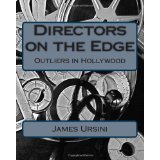
Noir expert and author James Ursini has a self-published Amazon book out called Directors on the Edge, a review of themes in the films of five film directors, only one of whom has seen much in the way of in-depth criticism: Hugo Haas, Reginald LeBorg, Ida Lupino, Gerd Oswald and Edgar G. Ulmer. Ursini details the stories and themes in what are unheralded pictures by this diverse group of talents, opting to connect the dots in a selection of titles rather than offer comprehensive overviews of their film work or in-depth director biographies. The strange filmmaker Hugo Haas comes off the as the most interesting, mainly because so few of his Beverly Michaels and Cleo Moore melodramas are easily seen today. Likewise, good analysis of Gerd Oswald is hard to find. Ursini's book is recommended for readers who want to learn more about these largely unheralded directors and their scattered minor masterpieces. His final essay on the work of Edgar G. Ulmer ties together what seems a group of movies unrelated by subject matter: horror classics, the blackest of the "loser noirs", odd westerns and strange science fiction stories. Thanks for reading! Glenn Erickson
August 23, 2011
Savant's new reviews today are: Blu-ray 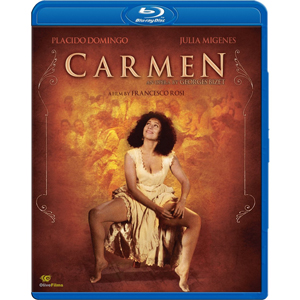 Francesco Rosi's 1984 film of the Bizet opera is the gold standard for opera 'opened up' onto film. Julia Migenes-Johnson and Plácido Domingo star and dazzling cinematography & fine direction do the rest. Filmed on Spanish locations. In Blu-ray from Olive Films.
Francesco Rosi's 1984 film of the Bizet opera is the gold standard for opera 'opened up' onto film. Julia Migenes-Johnson and Plácido Domingo star and dazzling cinematography & fine direction do the rest. Filmed on Spanish locations. In Blu-ray from Olive Films.
8/23/11
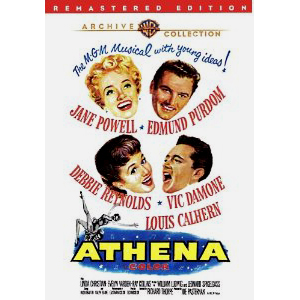 This MGM screen original musical has pleasing performances from Jane Powell and Debbie Reynolds, and some odd ideas as well. The concept pulls together a number of health & fitness fads, illustrating them with the weird notion of organically optimized people, who turn out to be musclemen bodybuilders like Steve Reeves. With Vic Damone, Louis Calhern and Edmund Purdom. From the Warner Archive Collection.
This MGM screen original musical has pleasing performances from Jane Powell and Debbie Reynolds, and some odd ideas as well. The concept pulls together a number of health & fitness fads, illustrating them with the weird notion of organically optimized people, who turn out to be musclemen bodybuilders like Steve Reeves. With Vic Damone, Louis Calhern and Edmund Purdom. From the Warner Archive Collection.
8/23/11
and Blu-ray  Todd Solondz dials back the despair a bit for this sequel to his oppressive Happiness, resulting in an intense, beautifully directed tale of flawed people leading blighted lives in an otherwise antiseptic modern America. His sympathetic / pathetic characters are their own worst enemies, and we see something of ourselves in them whether we want to or not. Starring Shirley Henderson, Ciarán Hinds, Allison Janney, Michael Lerner, Paul Reubens, Ally Sheedy and Michael Kenneth Williams. Appended with some insightful interview extras; in Blu-ray from the Criterion Collection.
Todd Solondz dials back the despair a bit for this sequel to his oppressive Happiness, resulting in an intense, beautifully directed tale of flawed people leading blighted lives in an otherwise antiseptic modern America. His sympathetic / pathetic characters are their own worst enemies, and we see something of ourselves in them whether we want to or not. Starring Shirley Henderson, Ciarán Hinds, Allison Janney, Michael Lerner, Paul Reubens, Ally Sheedy and Michael Kenneth Williams. Appended with some insightful interview extras; in Blu-ray from the Criterion Collection.
8/23/11

Greetings! After recovering from the fascinating but exhausting The Reel Thing experience, it's back to pushing opinionated disc reviews! Kino, Lionsgate, Criterion, MGM and Image have impressive new Blu-rays to cover, and Twilight Time has a new disc out as well. With the summer opportunities to actually do things outside the house finally at an end, there should be less stress on the review writing. When my volume drops, it's because I don't want to rush the reviews -- they have enough typos as it is. Correspondent Brad Arrington forwards this amusing and probably already very popular Wimp.com video link called Airswimmers. It looks like a lot of fun, especially watching the little kids respond to the sight of an indoor room suddenly transformed into an aquarium. Gary Teetzel sends two links this week. The first is to Richard Sargent's large online artwork called Where's Wall-E?, which appears to have just about every robot and robot-like movie character ever created. Theyre' all there: GOG, the walking refrigerator from Devil Girl from Mars, Tobor the Great, Target Earth's robot, even what looks like the robot from the Soviet Planeta Bur. If only they weren't so crowded together! The second link is to Rob Ager's compelling video analysis (in two parts) of John Carpenter's The Thing, a movie that always frustrated me because there was no way to determine which of the characters are still human during the show, even after repeat viewings. Ager's Thing Analysis at blastr puts a lot of thought into the mystery, and offers an enlightening interpretation of the final scene. Ager's deep observations are doubly interesting because John Carpenter's storytelling style gives no indication that he's leaving "clues" to the mystery. The videos are actually a follow-up to an original Ager examination of The Thing, for which blastr.com gives no link. Or I missed it. Correction to follow? Thanks for reading! Glenn Erickson
August 15, 2011
The Reel Thing symposium finished tonight on a good note. As a guest amid all those talented and knowledgeable people discussing their specialties, I often felt like an outsider allowed to peek in on a special clan function. What you walk away with is the conviction that these people are making a big difference in preserving film history. Friday actually saw two screenings I didn't mention yesterday. Thomas Bakels screened his almost-complete work in progress on The Loves of Pharaoh, which looked fantastic, had very strong performances from Emil Jannings and Paul Wegener, and was just as "epic" as promised. Miracle of miracles, a 90 year-old movie that simply did not exist in any screenable form has been resurrected. Because all the major climaxes are among the surviving material, it plays very well too -- the story of love destroying an empire has some very emotional moments. The Friday night 'surprise' screening was a newly restored copy of Sony's Monty Python and the Holy Grail, with the producer present. 
Saturday began with another new restoration, the 1916 American silent film Shoes by Lois Weber, a director of socially-critical dramas noted for their naturalism and low-key acting. Anneke Kross of the EYE Film Institute of the Netherlands produced the restoration, using two tinted nitrate copies and a 1932 cutdown repurposed as a sarcastic one-reel comedy. The very serious story concerns a shopgirl who must turn over her meager pay to her impoverished family. For the want of a pair of decent shoes, she gives herself to a man, "ruining herself forever." The restoration removed thousands of mold spots that marred the images throughout, allowing new viewers to see the film without distracting damage. Michael Mortilla provided a piano musical accompaniment for the screening. Jon Polito then gave a detailed account of the way his company Audio Mechanics organizes its management of studio sound elements as a useful, accessible database, an effort to help studios really know what audio assets it has on its feature films, and keep track of their condition and what stage of restoration they might be in. As with all new image and audio media systems, Jon's workflow analysis takes into account the concept of migration: all the information gathered must be adaptable to future storage systems, when present day discs and drives become obsolete. 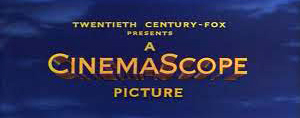
Ralph Sargent of Film Technology and Dave Kenig of Panavision then presented the results of a unique experiment. Every film format buff knows that in 1957 & 1958, improved Panavision anamorphic lenses pretty much took over the market previously cornered by CinemaScope's Bausch & Lomb anamorphic lenses. Sargent and Kenig's repeated a much-referenced test that concluded that Panavision lenses were far better for flatness of field and an even compression (squeeze) throughout the focal plane -- a more accurate way to describe the CinemaScope Mumps described in yesterday's column. Taking actual original lenses from storage and display, they conducted the test under controlled conditions. We saw the surprising results in a new 35mm test short subject. The marketing claims made by Panavision were accurate -- the company's first lens outperformed Bausch & Lomb's first generation of CinemaScope lenses. What they discovered is that Cinemascope's next generation of "Blue" lenses corrected most of the field and compression flaws. To finish, they showed sequences from Fox's The Fly (filmed in 1st-generation 'scope) and Fox's The Innocents (2nd generation 'scope). In The Fly the camera really can't approach the actors without distortion occurring -- even in a tight medium shot, Patricia Owens begins to squash horizontally. In The Innocents the actors practically dance around the camera, moving from medium to close distance and then so close that their heads crowd the frame. Focus is sharp and the compression is correct. Panavision had the better mousetrap just long enough for their marketers to lure away most of CinemaScope's rental customers. The post-Lunch presentation saw Andrea Kalas of Paramount and Josh Wiggins of Thought Equity Motion describing a Pilot Project to manage "Deep Library" films owned by the studio. Part of the problem of getting Paramount's less immediately exploitable film holdings to outlets like Netflix is the difficulty and expense for internal marketers to understand what they have, and what shape it is in. In the past, just to allow the viewing of potential titles, vast sums were expended on tape duplicates that might be seen or used only once. The project describes scanning the film library and then creating a digital resource for internal use. Ms. Kalas named examples from Paramount's Republic holdings: She Devil, Satan's Satellites and Private Hell 36. As a test subject, we were shown raw and timed scans from Private Hell. 
The most dazzling presentation of the day visually came courtesy of Tom Burton of Technicolor Creative Services, which last year undertook a crazy digital restoration of Georges Méliès' 1902 A Trip to the Moon. Fairly intact dupe copies of the 14-minute film exist, but the project performed a crazyquilt reconstruction using an original tinted copy of the film found in Barcelona. The problem was that the roll of nitrate film had fused into a nearly solid block. Coxed apart after being chemically softened, the "giant hockey puck" yielded thousands of what Burton described as film shards -- half a frame here, a third of a frame there. These were all organized & scanned, reassembled one frame at a time and reconstituted by combining them with bits of the black & white version -- assembled like Frankenstein, as Burton said. The result opened this year's Cannes film festival. Burton further explained that the French client didn't want to merely use the tinted original as a guide to recolor the B&W copy, but wanted to see the actual original pieces where possible. The only thing that made it possible, with all the image-trading going on, was the fact that A Trip to the Moon has only a handful of shots, and every shot is locked down. Recover a few seconds of intact rooftoop artwork at the bottom of the frame, and that area can be patched up for an entire shot. The final product looks much more like an original artifact, than a careful recreation. 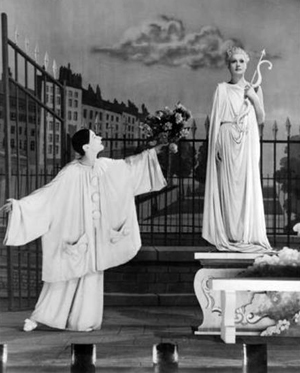
The closing screening for Saturday evening was Marcel Carné's French classic The Children of Paradise, brought to AMIA by Christian Lurin of Éclair Group. Lurin took the microphone to go over the steps in the restoration, starting with a 4k scan in Italy of the original nitrate negative. Other sources had to be used, which complicated an already daunting task: the original film was produced during the Occupation in WW2, and filmed on whatever 35mm stock was available, causing mismatches in granularity between scenes. Mr. Lurin sketched the restoration process, using film clips to show improvements in the image and explaining the rationale to determine how much grain suppression would be used, and where. When discussing the long-term preservation of the restored elements, Lurin said something surprising but completely logical -- the film record of the restoration is a low-con positive element, not a negative. Why? People can quickly and cheaply strike a print from a negative, so the idea is to discourage future film custodians from ruining the protection copies by using them as printing masters. Very astute. The last presentation was by Kevin Manbeck and Larry Chernoff of MTI Film, developers of a sophisticated Automatic Dust Removal digital tool. Mathematician Manbeck went through the technical rundown, very clearly explaining how his software discriminated dirt specks from naturally occuring points of light in the image. Mr. Chernoff then showed how the software is normally used. The work interface locates (on the test sample) hundreds of tiny "suspect" flaws on a single frame, too many to be investigated and cleaned up manually. It then goes through several levels of clean-up, first identifying specks it is certain should be removed and then working its way toward more questionable flaws. We actually saw the tool do its work, which was very impressive. It's flexible, so that the operator can jump into manual mode at any time to address larger flaws. After some internal AMIA proceedings, the symposium prepared for the Children of Paradise screening, for which Sony provided its impressive 4k projector, a machine much more advanced than what's being used in theaters now. I saw Taxi Driver and Breakfast at Tiffany's projected on this machine back in April's TCMFest, and in the large Grauman's Chinese theater it easily bested 35mm. I once again wish to express my thanks to Grover Crisp and my individual sponsor Thomas Bakels for allowing me to attend; I'm happy to promote AMIA's efforts. The plan is for The Reel Thing to once again return to Hollywood next August. If you'd like to inquire about membership, the information is up at their website.
And so continues the Savant coverage for the technical symposium The Reel Thing. With the gracious invitation of Thomas Bakels and Sony's Grover Crisp, I settled in with approximately 200 members of the AMIA this morning. Organizer Crisp performed emcee duty for the association's friendly, like-minded film archivists, media managers and digital and photochemical restoration experts. They first showed a Fox CinemaScope promo from 1954 explaining the concept of directional, multi-channel sound. Then the special presentations began, which took the form of Powerpoint lectures accompanied by film clips, on the big Linwood Dunn Academy screen. 
First up was Robert Heiber of Chace Audio of Deluxe, who examined the problems of audio preservation with early sound-on-film movies from 1928-1930. The filmic example used was the 1929 English science fiction film High Treason, a highly prophetic feature but a real mess of poor audio, at least in the American version we heard. The technology had not yet been invented for mixing sound: optical tracks recorded on the set were hot-spliced together and cut whenever the picture cut. Terrible audio pops on every cut had to be blooped, which resulted in pops of moderate volume. One method of producing a fade was to dip the optical track in bleach, taking a chance that the audio would fade at the right point. The example we heard didn't fade smoothly at all. Heiber ended his presentation with an aesthetic question. It's now possible for audio engineers to hide the pops, smooth out the fades and mismatched background presences, mute klunky footsteps and even boost the dialogue, but how far should they go? Should the tracks be left as they are to properly preserve film history? Andrew Oran of Fotokem presented second, with a very exacting and technical overview of "Color Space" theory, the way that color is calibrated to standardize the point of "unity" for film and video color timing. A lot of math is involved, and although I could grasp perhaps 80% of the concepts presented, the formulas and graphs left me far behind. No matter - the symposium is for restoration professionals. Jim James from Point 360 Digital Film Lab then did an overview of Wet-gate film scanning, a familiar topic for anyone who has worked in film since 1970 or so. James covered the expected optics that allow wet-gate machines to effectively erase scratches on the base side of film and minimize the effect of emulsion damage. His examples were excellent. Something I didn't know was that some facilities are now scanning film with Infra-red light, which isolates scratches and other flaws on a new record for later digital clean-up. 
An exciting presentation for film historians and archivists came from David Pierce, the founder of The Media History Digital Library. Later this fall Mr. Pierce will be publishing in print and online (fully accessible) an accounting for all American silent features, indicating which have survived and where they (or parts of them) can be found. David's research found that very few silents still exist, not the 50% once claimed; he presented plenty of newspaper and trade magazine clippings as well as actual studio correspondence to show what happened to them. Those that didn't perish in vault fires in the 1930s were junked, and most that weren't junked, decomposed (or were claimed to have decomposed). David produced evidence that it was a common practice for all the elements of a single title to be stored in the same vault. When a fire did occur, everything on that title would be wiped out. This explains why so many existing silent features now exist only as dupes of foreign prints. David Pierce screened a New Jersey fire department film of one big fire, from 1938. The second part of his presentation covered his Media History Digital Library's effort to scan, preserve and make accessible publications devoted to film in its early decades. A lot of early film history only exists in trade magazines that reviewed films and charted their production. George Gush and James Hirano of Fujifilm then gave a talk and slide show about their company's new B&W film stock for digital separations, for use in preservation. The best and longest lasting protection for film is to make color separation masters on film, which when properly stored still lasts far longer, more reliably, than video and digital records. George's graphs and diagrams showed how altering the film emulsion and adding an anti-halation layer yielded better results; they showed a reel of scenes of a recent 20th-fox Tom Cruise picture as a demonstration. 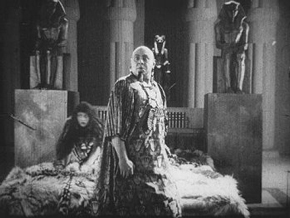
The symposium took a late-ish lunch and reconvened for Thomas Bakels' presentation of his decade-long restoration of Ernst Lubitsch's early (1922) German silent The Loves of Pharaoh (Das Weib des Pharao). When the job began in 2002 Bakels had a producer and a budget, but after a first attempt at a film score didn't work out, both evaporated. So Bakels' Alpha-Omega company of Munich is now the producer of the restoration and its expected video release. The spectacular Egyptian epic was considered lost in 2001, when Thomas learned that the Munich Filmmuseum had located 60% of the show in Moscow, in terrible condition. Enno Palatas had done a partial reconstruction. Things picked up when Bakels got permission from the George Eastman House to access their remnant from an Italian source ... which just happened to cover 30% more of the picture with better-quality material. A few more scenes were found in 16mm. In Alpha-Omega's final cut, only 600 meters out of 3200 are missing. 
Mr. Bakel's demo images are startling -- much of the Russian remnant was missing sprocket holes, yet he found a way to extract a perfectly registered scan. All the tricks learned on his restoration of Metropolis came into play; his before and after comparison scenes are nothing less than amazing. Alpha-Omega paid for the film's original Eduard Künneke score to be adapted and conducted by Frank Strobel with a large orchestra. The movie's color tints have also been carefully restored. The movie, a vast epic filmed on enormous sets, was the most expensive German film before Metropolis and Ernst Lubitsch's last before relocating to Hollywood. The stars are Emil Jannings (The Blue Angel) as the Pharaoh Amenes, Dagny Servaes as the Greek slave girl Theonis, Harry Liedtke as the young hero Ramphis, Paul Wegener (The Golem) as Samlak, king of Ethiopia, and Lyda Salmonova (also The Golem) as Samlak's daughter Makeda. The restoration of an Ernst Lubitsch picture is a major event for film culture, worldwide. Appropriately enough, the West coast premiere will be held at The Egyptian Theater in October. One more major installment for the symposium tomorrow ... thanks for reading, Glenn Erickson
A quick report on the opening night of this year's technical symposium The Reel Thing here in Hollywood, mounted by the Association of Moving Image Archivists (AMIA): The first night's opening screening, provided by Disney, was the 'world premiere' of a 4k digital restoration of their CinemaScope blockbuster 20,000 Leagues Under the Sea. Disney executives gave a brief explanation of what was done to maximize the film's colors; they also said that no "grain management" or "sharpness enhancement" was applied to the picture. They even presented the film exactly as it had been premiered for Christmas of 1954, with a Donald Duck cartoon. The execs explained very clearly the improvements made to the picture. 20,000 has numerous shots plagued by the "CinemaScope Mumps" -- any actor in a close-up (or a tight two-shot) looks horizontally squashed, and always has. It was an early flaw of the anamorphic process. By scanning the original negatives, Disney reclaimed more "real estate" on the horizontal axis. Bits of image area to the extreme left and right had always been unused because it was covered by magnetic soundtracks. For the shots with "Mumps", the extra width allowed the digital compositors to squeeze the image slightly -- without blowing it up -- putting Captain Nemo's face back into proper proportions. It really helps. I'm not sure, but I think that something similar was done to Warners remasterings of A Star Is Born and Love Me Or Leave Me, both of which no longer seem to have squashed-head close-ups in new DVD and Blu-ray versions. Two other notes. We were told that the density (and slight softness) of original Technicolor prints effectively hid the many wires used to manipulate the giant squid's arms in the stormy battle scene. When scanned at 4k, the sharpness and less-dark blacks revealed more wires. So Disney painted them out, as they weren't originally visible. I also heard noted editor & film expert Rick Mitchell say something after the show that immediately got my attention. When the bomb goes off, one view of the exploding island with the sub in the foreground was filmed flat, and allowed to stretch out horizontally. That's apparently been fixed as well. I was looking for it and thought I missed it; Mitchell pointed it out. I'm off to the first full day of presentations and screenings and will report in the evening... Thanks for reading, Glenn Erickson
Savant's new reviews today are: 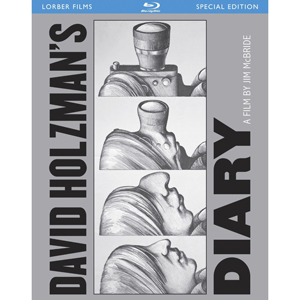 Jim McBride was the first 60s student filmmaker out the door with a smart satire of the cinema verite ethos, a spoof that's so convincing, it fools most casual viewers. Also contains two other classic (and sincere) McBride 'scrapbook' films, and a fairly recent McBride family wrap up video. In Blu-ray from Kino Lorber Films.
Jim McBride was the first 60s student filmmaker out the door with a smart satire of the cinema verite ethos, a spoof that's so convincing, it fools most casual viewers. Also contains two other classic (and sincere) McBride 'scrapbook' films, and a fairly recent McBride family wrap up video. In Blu-ray from Kino Lorber Films.
8/16/11
 Jean Renoir's moody psychological triangle with Joan Bennett, Robert Ryan and Charles Bickford never quite gels as a noir thriller or a character study, due to RKO studio interference. Planned and cast by producer Val Lewton, it's the Lewton-Renoir collaboration that got away. From the Warner Archive Collection.
Jean Renoir's moody psychological triangle with Joan Bennett, Robert Ryan and Charles Bickford never quite gels as a noir thriller or a character study, due to RKO studio interference. Planned and cast by producer Val Lewton, it's the Lewton-Renoir collaboration that got away. From the Warner Archive Collection.
8/16/11
and  Vittorio De Sica regained his directing throne with this impassioned adaptation of a book about wealthy Jews in Ferrara, Italy during Mussolini's regime, trapped by the encroachment of anti-Semitic laws. An entire culture is quietly swept away by fascist edict. Dominique Sanda and Romolo Valli head an impressive cast. A PAL Region 0 disc (UK) from Arrow Academy.
Vittorio De Sica regained his directing throne with this impassioned adaptation of a book about wealthy Jews in Ferrara, Italy during Mussolini's regime, trapped by the encroachment of anti-Semitic laws. An entire culture is quietly swept away by fascist edict. Dominique Sanda and Romolo Valli head an impressive cast. A PAL Region 0 disc (UK) from Arrow Academy.
8/16/11

Greetings! A bit of confusion seems to have greeted the announcement by Kino of a new disc of the Giorgio Moroder version of Metropolis. Actually, Kino wanted to include Moroder's 1983 'disco' version (along with other earlier partial restorations) in a planned Metropolis mega-box release of last year's The Complete Metropolis, but the German licensors weren't amenable. Composer Moroder caught as much flak as he did praise for his tricked-out revisit of the Fritz Lang classic. Much of what he did now sounds like cinematic vandalism: replacing inter-titles them with awkward subtitles over the image; colorizing scenes, and especially plastering on a wall-to-wall disco score featuring a plenty of vocals, only a few of which seem appropriate to the images and story. But even the German restoration experts respect the Moroder version, as it was the first to attempt to rebuild Lang's original storyline of Metropolis. All we'd seen up to that time was the Channing Pollock re-write that reduced the film to incoherence. Moroder restores the relationship between Joh Fredersen and Rotwang, and re-inserted the dead wife "Hel" through stills and new graphics. Moroder's score has survived as a collectable CD for 25 years now, and it still plays well when divorced from the movie. My kids grew up watching this version, and I winced somewhat when they commented on the uncut version -- they missed the Moroder music! Kino has apparently not set a date for the new disc as yet. Also, I was just reminded by fellow writer Jeremy Arnold of a stack of interesting debut screenings to be given on the Turner Classic Movies cable channel in September. I'll call some of them out later on but want to mention one now, Paramount's 1933 The Story of Temple Drake, one of the most discussed of the pre-code shockers, with Miriam Hopkins as a 'good Southern girl" who more or less becomes the willing sex slave of a perverse gangster who goes by the name Trigger. Temple Drake was an enormous draw at the first TCM Festival in Los Angeles in 2010, having been one of those 'flagged as controversial' vault items shown rarely if at all on television. Finally, the MGM Limited Edition Collection is finally releasing the first feature in the Quatermass series, 1955's The Quatermass Xperiment late in September. Viewers without TCM or MGMHD cable will finally get a chance to see it. All this is a reminder to check out the 2011 Savant Wish List. Thanks for reading! -- Glenn Erickson
August 12, 2011
Savant's new reviews today are: 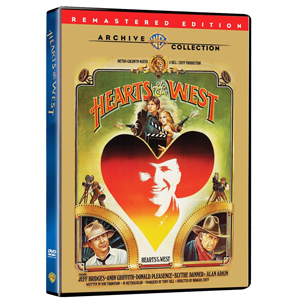 This comic tale follows young Lewis Tater, an aspiring "novelist of western fiction" who stumbles into the movie game in the early 1930s and almost becomes a cowboy hero of the silver screen. Jeff Bridges is charming as the greenhorn adventurer, backed by Andy Griffith, Blythe Danner and Alan Arkin. I don't understand why it's taken so long for this winner to reach DVD. A Remastered Edition from the Warner Archive Collection.
This comic tale follows young Lewis Tater, an aspiring "novelist of western fiction" who stumbles into the movie game in the early 1930s and almost becomes a cowboy hero of the silver screen. Jeff Bridges is charming as the greenhorn adventurer, backed by Andy Griffith, Blythe Danner and Alan Arkin. I don't understand why it's taken so long for this winner to reach DVD. A Remastered Edition from the Warner Archive Collection.
8/13/11
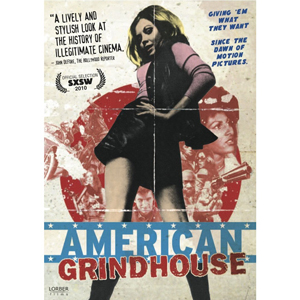 It's a wild docu excursion through eighty years of curious public entertainments too seedy or notorious for the mainstream movies -- sex, drugs, violence, sideshow freaks, live childbirth, burlesque strippers, nudie-cuties, blasphemy and gore. The history of filmic exploitation is viewed through interviews by those who worked in the field as well as younger directors and historians. The fast-moving format offers a bottomless supply of high-quality film clips. Piles of taste-challenged extras, too! From Lorber Films.
It's a wild docu excursion through eighty years of curious public entertainments too seedy or notorious for the mainstream movies -- sex, drugs, violence, sideshow freaks, live childbirth, burlesque strippers, nudie-cuties, blasphemy and gore. The history of filmic exploitation is viewed through interviews by those who worked in the field as well as younger directors and historians. The fast-moving format offers a bottomless supply of high-quality film clips. Piles of taste-challenged extras, too! From Lorber Films.
8/13/11
and Blu-ray  Gillo Pontecorvo's revolutionary epic takes a gritty look at the Algerian war (1954-62) that involved guerilla resistance, torture, murder and lawlessness on both sides. Famous for its faux-documentary camerawork and the fact that both the Black Panthers and the IRA used it as a reference tool. Two HD discs are required to carry a range of historical and new extras. In Blu-ray from the Criterion Collection.
Gillo Pontecorvo's revolutionary epic takes a gritty look at the Algerian war (1954-62) that involved guerilla resistance, torture, murder and lawlessness on both sides. Famous for its faux-documentary camerawork and the fact that both the Black Panthers and the IRA used it as a reference tool. Two HD discs are required to carry a range of historical and new extras. In Blu-ray from the Criterion Collection.
8/13/11
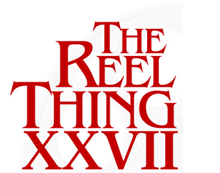
Greetings! If things proceed as planned, in a week I'll be attending The Reel Thing here in Hollywood, the yearly technical symposium of the Association of Moving Image Archivists (AMIA). I was able to sit on on last year's The Reel Thing, and reported on its expert presentations and screenings in three older Savant Column Archives starting on August 9, 2010. 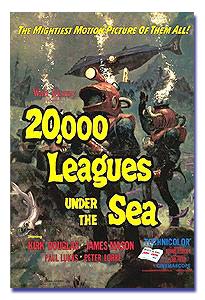
Unless I'm advised not to, I'll be eagerly writing up my experiences again. I loved the symposiums last year and this year hope to attend some the screenings as well. Already announced a quartet of impressive new restorations: Alpha-Omega's 1922 Ernst Lubitsch The Loves of Pharaoh, a reportedly fantastic color revival of George Melies' A Trip to the Moon, a 4k refurbishing of Marcel Carné's The Children of Paradise and Disney's ultra-sophisticated, long-in-the-works rejuvenation of Richard Fleischer's 20,000 Leagues Under the Sea, with special attention to the problems of early CinemaScope. There are also said to be a couple of secret screening surprises in store. Even better, I may get to talk with restoration experts and studio executives I haven't seen in a while. Forwarded by correspondent Gary Teetzel: This Wall Street Journal article is unfairly critical of Orson Welles (how dare he be a capricious artist!) but it does mention an upcoming UK restoration of Welles' Chimes at Midnight. That was a fantastic film even in its original release with the flawed audio. I just hope Jesus Franco has nothing to do with the restoration! Thanks for reading! -- Glenn Erickson
August 08, 2011
Savant's new reviews today are: 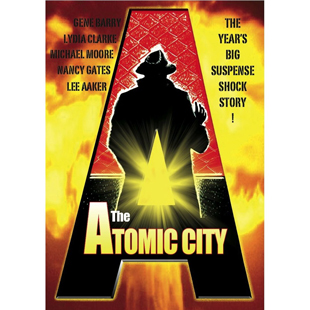 Rotten commie spies kidnap the son of a top nuclear physicist and demand bomb plans as a ransom. Gene Barry, Nancy Gates and Lee Aaker star in an excellent spy chase, probably the first American movie to deal with the nuclear threat from a security angle. Remember kids, it's not "When I grow Up...", it's "IF I grow up." A thrilling show that brings up many of the "expediency" issues from TV's "24". From Olive Films.
Rotten commie spies kidnap the son of a top nuclear physicist and demand bomb plans as a ransom. Gene Barry, Nancy Gates and Lee Aaker star in an excellent spy chase, probably the first American movie to deal with the nuclear threat from a security angle. Remember kids, it's not "When I grow Up...", it's "IF I grow up." A thrilling show that brings up many of the "expediency" issues from TV's "24". From Olive Films.
8/09/11
Blu-ray  The Dude shall never fail us! He looks even more affably indolent and California Casual in HD. The Coens' oddball ode to mellow veterans of the High Time '60s is really a twisted remake of The Big Sleep. It's the movie about the rug that really tied the room together. With plenty of extras and a digital download too. In Blu-ray from Universal Studios Home Entertainment.
The Dude shall never fail us! He looks even more affably indolent and California Casual in HD. The Coens' oddball ode to mellow veterans of the High Time '60s is really a twisted remake of The Big Sleep. It's the movie about the rug that really tied the room together. With plenty of extras and a digital download too. In Blu-ray from Universal Studios Home Entertainment.
8/09/11
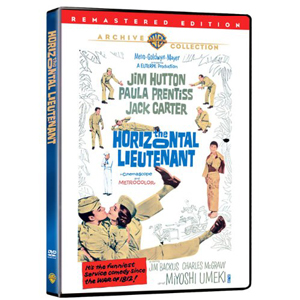 Paula Prentiss and Jim Hutton are wonderful co-starring in their final rom-com MGM vehicle, but the movie's script and direction suffer from tired blood. Hutton's a clumsy Naval Intelligence agent ferreting out diehard Japanese on a South Pacific Island; Prentiss is a nurse enjoying her pick of escorts to Navy dances. Remastered in widescreen CinemaScope from the Warner Archive Collection.
Paula Prentiss and Jim Hutton are wonderful co-starring in their final rom-com MGM vehicle, but the movie's script and direction suffer from tired blood. Hutton's a clumsy Naval Intelligence agent ferreting out diehard Japanese on a South Pacific Island; Prentiss is a nurse enjoying her pick of escorts to Navy dances. Remastered in widescreen CinemaScope from the Warner Archive Collection.
8/09/11
and Blu-ray 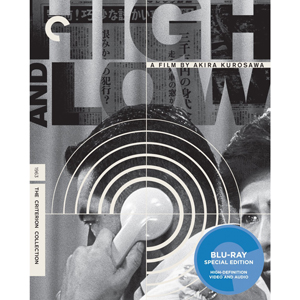 Toshiro Mifune and Tatsuya Nakadai return in one of Akira Kurosawa's best, a hypertense police thriller about the search for a ruthless kidnapper. Great use of the Tohoscope screen for a suspenseful scene on a Japanese bullet train; plenty of weird, powerful scenes contrasting life for the rich with the misery of those in the slums. In Blu-ray from the Criterion Collection.
Toshiro Mifune and Tatsuya Nakadai return in one of Akira Kurosawa's best, a hypertense police thriller about the search for a ruthless kidnapper. Great use of the Tohoscope screen for a suspenseful scene on a Japanese bullet train; plenty of weird, powerful scenes contrasting life for the rich with the misery of those in the slums. In Blu-ray from the Criterion Collection.
8/09/11

Hello there! Friend and advisor Sergio Mims tells me that The Guns of Navarone Blu-ray will street on October 18 (and Sergio is never wrong). I have two things to say about the disc. A restoration insider saw Guns being worked on in a video facility a few months ago, and told me that it looked very, very good. This show hasn't looked great since 1961, and has a tragic history of elements mismanagement. UCLA pretty much ran into a brick wall trying to recover the film's original color and contrast values; the new disc will hopefully be a digital rebirth for the movie. Second, the release will have the extras I edited from a few years back, giving me another shot at some some heinous self promotion. Nothing's more fun than cutting to that dynamic Dimitri Tiomkin music! Joe Dante forwards this interesting link to a Sound On Sight article by Bill Mesce called The "Gray Ones" Fade to Black. He comes up with some depressing answers to why his film appreciation students say things like, "How come you only show us clips from movies none of us ever heard of?", and "Why do we have to see them?" Pretty creepy but completely understandable. Will the 20th century B&W movie drop to the cultural popularity level of the 18th century novel, only watched when someone is forced to watch them? And Gary Teetzel adds a funny link to Cracked.com, which offers a pretty cute set of B-Movie Posters for Classic Films. The idea is that cheap exploitation pictures are often sold on misleading terms ... why not do the same for big-ticket movies? Thanks for Reading! --- Glenn Erickson
August 05, 2011
Savant's new reviews today are: Blu-ray 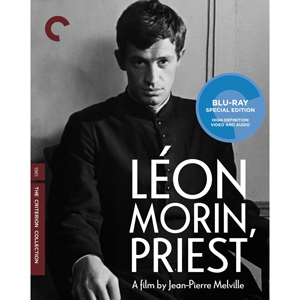 Jean-Paul Melville precedes his long string of Euro-noir crime stories with a superlative adaptation of a novel about the relationship between a partisan's widow and a young priest in the German-occupied French Alps. The absorbing story takes no predictable steps; the stars are the soulful Emmanuelle Riva and Jean-Paul Belmondo, who is a revelation as the priest. In Blu-ray from the Criterion Collection.
Jean-Paul Melville precedes his long string of Euro-noir crime stories with a superlative adaptation of a novel about the relationship between a partisan's widow and a young priest in the German-occupied French Alps. The absorbing story takes no predictable steps; the stars are the soulful Emmanuelle Riva and Jean-Paul Belmondo, who is a revelation as the priest. In Blu-ray from the Criterion Collection.
8/06/11
 Marxist intellectual poet Pier Paolo Pasolini and popular conservative political humorist Giovanni Guareschi take part in a bizarre experiment, each producing an hour-long cinema-essay explaining the anxiety and fear of the times (1963) from polar political viewpoints. One show is a somewhat sketchy poetic piece, and the other a telling example of hateful propaganda. An exceedingly interesting eye-opener, from Rarovideo.
Marxist intellectual poet Pier Paolo Pasolini and popular conservative political humorist Giovanni Guareschi take part in a bizarre experiment, each producing an hour-long cinema-essay explaining the anxiety and fear of the times (1963) from polar political viewpoints. One show is a somewhat sketchy poetic piece, and the other a telling example of hateful propaganda. An exceedingly interesting eye-opener, from Rarovideo.
8/06/11
 A top noir title that could be the watershed between the expressionist '40s and the semi-docu '50s, Michael Curtiz's tense thriller is the most suspenseful and gritty version of Ernest Hemingway's To Have and Have Not. John Garfield is sensational in one of his last film roles before the blacklist harried him to death; Patricia Neal and Juano Hernandez are also excellent. The subtly subversive screenplay is by Ranald MacDougall. From the Warner Archive Collection.
A top noir title that could be the watershed between the expressionist '40s and the semi-docu '50s, Michael Curtiz's tense thriller is the most suspenseful and gritty version of Ernest Hemingway's To Have and Have Not. John Garfield is sensational in one of his last film roles before the blacklist harried him to death; Patricia Neal and Juano Hernandez are also excellent. The subtly subversive screenplay is by Ranald MacDougall. From the Warner Archive Collection.
8/06/11
and Nights in the Gardens of Spain Blu-ray 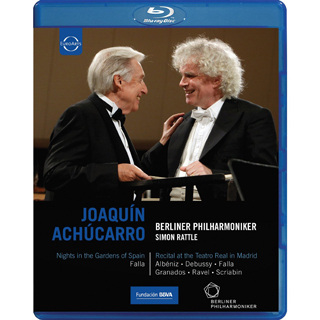 The Spanish concert pianist is presented in two concerts, one with conductor Sir Simon Rattle and the Berlin Filharmoniker, and a second solo performance in Madrid. The Spanish-flavored playlist includes major works by Manuel de Falla, Claude Debussy, Maurice Ravel, Enrique Granados, Alexander Scriabin and Isaac Albeniz. In Blu-ray from Euroarts.
The Spanish concert pianist is presented in two concerts, one with conductor Sir Simon Rattle and the Berlin Filharmoniker, and a second solo performance in Madrid. The Spanish-flavored playlist includes major works by Manuel de Falla, Claude Debussy, Maurice Ravel, Enrique Granados, Alexander Scriabin and Isaac Albeniz. In Blu-ray from Euroarts.
8/06/11
Greetings! I have a couple of links for your weekend perusal:
I've been corresponding with writer Shaun K. Chang for several years now; he researches starlet-actresses of the 1960s and once took me to a lunch meeting with the charming Barbara Luna. Shaun's new blog offers a personal memoir of his friend Polly Platt (1939 - 2011). Thanks for reading! -- Glenn Erickson
August 01, 2011
Savant's new reviews today are: 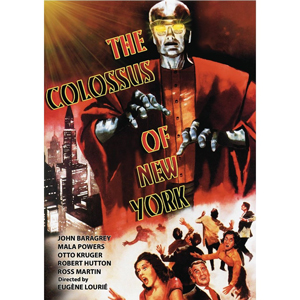 A giddy, morbid Sci-fi mix of Frankenstein and The Golem that seems a direct precursor to RoboCop, but with an odd pacifist message. Ross Martin's brain is relocated to a massive cyborg metal man. The 9-foot robot then divides its time between wrestling with profound feelings of alienation, and zapping unreliable relatives with death rays. An impressive job of minimalist monster mayhem from director Eugène Lourié. From Olive Films.
A giddy, morbid Sci-fi mix of Frankenstein and The Golem that seems a direct precursor to RoboCop, but with an odd pacifist message. Ross Martin's brain is relocated to a massive cyborg metal man. The 9-foot robot then divides its time between wrestling with profound feelings of alienation, and zapping unreliable relatives with death rays. An impressive job of minimalist monster mayhem from director Eugène Lourié. From Olive Films.
8/02/11
Blu-ray 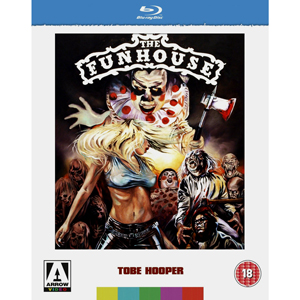 Four foolish young 'uns find themselves locked in a carnival fun house overnight, and stalked by a homicidal maniac and an unpredictably dangerous mutation. Elizabeth Berridge stars, and together with an elaborate production and good monster effects, holds the movie together. Tobe Hooper is the director of this Universal release, in Panavision. From Arrow Films (UK).
Four foolish young 'uns find themselves locked in a carnival fun house overnight, and stalked by a homicidal maniac and an unpredictably dangerous mutation. Elizabeth Berridge stars, and together with an elaborate production and good monster effects, holds the movie together. Tobe Hooper is the director of this Universal release, in Panavision. From Arrow Films (UK).
8/02/11
and 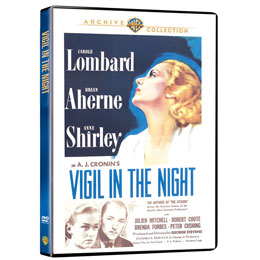 Carole Lombard takes a break from screwball comedies to star in a serious drama about nurses, medical ethics and social responsibility. It's directed by the esteemed George Stevens but is one of his forgotten titles; given high billing on the cast list is a 26 year-old Peter Cushing. Also with Brian Aherne and Anne Shirley. From the Warner Archive Collection.
Carole Lombard takes a break from screwball comedies to star in a serious drama about nurses, medical ethics and social responsibility. It's directed by the esteemed George Stevens but is one of his forgotten titles; given high billing on the cast list is a 26 year-old Peter Cushing. Also with Brian Aherne and Anne Shirley. From the Warner Archive Collection.
8/02/11
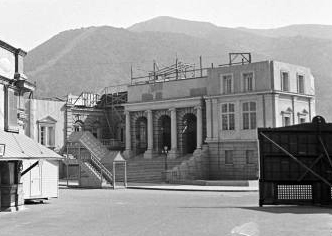
Greetings! August is here, which starts the really hot weather for Southern California. I'm so cheap that I swelter before I resort to air conditioning, however. You try to be "green" around here and something trips you up every time. Dick Dinman has a good radio show this week, called Inside the Walls of the Warner Archive. His interview with WAC VP George Feltenstein covers the visionary inspiration behind and the development of the successful movies-on-demand concept. Dinman's entire Archive of Classics Corner on The Air radio shows are here. I've had plenty of mail on what should be a non-issue, the idea that the WAC disc of Dark of the Sun is "missing" edited scenes. It just isn't so. Even in Sweden, as reported by Savant correspondent Stefan Andersson (now footnoted to the review), the movie was submitted at its standard length (the same as the WAC print) before being banned! I've read a couple of incensed web board entries from people who swear they've seen more violence, but I've seen no proof or even official indications of longer cuts. I suppose it's possible that a pre-release print floated around, or that director Cardiff donated a longer print to the BFI or something, as we've already seen examples of slightly longer individual prints showing up for censored titles like The Stranglers of Bombay. Readers also mention seeing a sexy Rod Taylor-Yvette Mimieux scene represented in a still printed in Playboy magazine. Nobody's denying that, as with many films, scenes were cut out of Dark of the Sun. But it's not logical to conclude that sexier or more violent content was originally in the movie because of a publicity campaign, as I once described in an article on What's New Pussycat? Praise has been coming in of another sort for Stuart Galbraith IV's interview with Steven Bingen on his book MGM: Hollywood's Greatest Backlot. Take a look at the end of that article for some interesting reader feedback. Thanks for reading, Glenn Erickson
Review Staff
| About DVD Talk
| Newsletter Subscribe
| Join DVD Talk Forum
|
|
| |||||||||